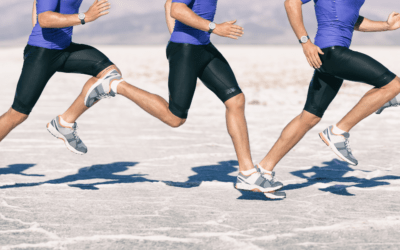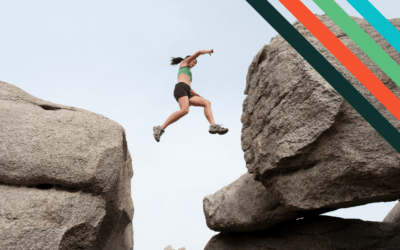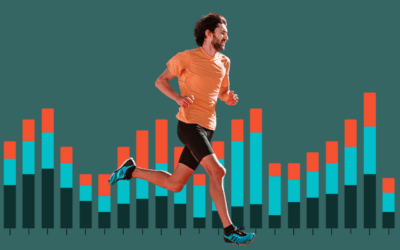Which Test Is Right for You? A Guide to Performance & Rehab Testing at Vital
When it comes to your health, performance, or recovery, the question isn’t just “Am I doing enough?” — it’s “Am I doing what’s right for me?”
At Vital Performance Care, we offer a wide range of testing options designed to help you move better, train smarter, and prevent setbacks before they start. Whether you’re an athlete chasing a personal best, a weekend warrior coming back from injury, or someone looking to better understand your body, there’s a test — or combination of tests — that can provide the clarity you need.
But with so many options, how do you know which one is right for you?
That’s what this guide is for.
VO2max Testing
Best for: Endurance athletes, health-conscious individuals, curious data-lovers
Why it matters: Your VO2max is a gold-standard measure of cardiovascular fitness. It’s not only linked to endurance performance but also to long-term health and longevity. The higher your VO2max, the higher your fitness and the lower your risk of mortality.
What sets us apart: We offer lab-grade testing protocols with real-time data interpretation by experienced exercise physiologists. We ensure accurate, repeatable, and safe protocols.
What you’ll learn: How efficiently your body uses oxygen during exercise—and where your current aerobic ceiling lies.
Lactate Threshold Testing
Best for: Runners, cyclists, triathletes, and anyone wanting more accurate training if they train with heart rate zones.
Why it matters: This test identifies the exact point where your body starts to rely more on anaerobic energy (aerobic threshold) and the exact point at which exercise becomes unsustainable (anaerobic threshold). This helps us accurately mark training zones.
What sets us apart: We are Master’s level professional Exercise Physiologists who use gold-standard protocols and who educate you after the test on how to actually use these in your training.
What you’ll learn: Personalized training zones to avoid burnout and overtraining, while also maximizing aerobic gains in your training so you can push forward with confidence.
👉 Get our Free Lactate Threshold eBook here
Body Composition Testing
Best for: Anyone tracking physique or health changes
Why it matters: Reliable body comp testing goes beyond the scale to show what’s really changing—muscle, fat, and everything in between.
What sets us apart: We use valid, repeatable tools, unlike unreliable BIA devices (where you stand on a scale and hold some sensors) that can vary wildly based on hydration or time of day. Skinfold caliper testing is a quick and painless way to track real changes in circumferences, body fat, BMI, and skinfold sizes. You’ll also get a % body fat testing estimate.
What you’ll learn: A more accurate understanding of fat mass, lean mass, and progress over time with the added motivation from the data.
👉 Here’s more info on skinfold caliper body comp testing
Isometric Strength Testing on Vald Testing Devices
Best for: Rehab clients, athletes, and strength-curious humans
Why it matters: Sometimes what feels like a “tight hip” or “bad knee” is really a strength imbalance or a blatant weakness in disguise.
What sets us apart: We use valid, repeatable tools and protocols, combined with expert problem-solving skills, to combine your movement assessment screen with your isometric strength testing to give you actionable items.
What you’ll learn: How strong (or not) individual joints and muscles are—and how they compare side to side and to other individuals your age and gender. Sport-specific norms are sometimes available, too.
👉 [Link to book strength testing coming soon]
Force Plate Testing
Best for: Athletes, rehab clients, performance nerds
Why it matters: These plates don’t just measure your jump—they break it down into how you produce and absorb force, where asymmetries show up, and which movement phases need attention.
What sets us apart: We use dual force plates to get an idea how the right side of your body is performing differently from your left side. This helps us tailor recommendations when paired with isometric strength testing (above).
What you’ll learn: Power output, jump height, balance, landing asymmetries, and other fine details that help prevent injury and fine-tune performance.
👉 [Link to book force plate testing coming soon]
Gait & Running Assessments
Best for: Runners, walkers, and anyone with lower body issues
Why it matters: Running isn’t just one foot in front of the other. We assess stride mechanics, efficiency, and compensations that may lead to pain.
What sets us apart: We are Master’s level physiologists and trainers with years of experience working with runners and assessing gait. (We even teach The Conditioning Workshop every year to teach other trainers how to do this).
What you’ll learn: How your body moves through space—and what could be holding you back or putting you at risk.
👉 [Link to book gait assessments coming soon]
Movement Assessments
Best for: Anyone, anytime
Why it matters: Whether you’re lifting, running, or just living life, your movement quality matters. These assessments pick up on poor habits or compensations before they become problems.
What sets us apart: Our coaches vary in their expertise and movement backgrounds, from different sport backgrounds, to Powerlifting and Olympic Lifting backgrounds, to various health conditions. Just ask and we will pair you up with the most appropriate person who knows how your body should be moving.
What you’ll learn: Functional movement patterns, mobility restrictions, and how your body coordinates through basic and complex tasks.
👉 [Link to book a movement assessment coming soon]
Strength & 1RM Testing
Best for: Lifters, return-to-sport clients, and the strength curious
Why it matters: Knowing your true max (or estimated) helps guide smarter training—especially when strength is the goal, and track changes in strength over time.
What sets us apart: We combine in-the-gym testing with technology to suit the individual’s needs and ensure we build the safest and most appropriate strength testing battery for you.
What you’ll learn: Joint-specific strength, grip strength, and 1RM (rep max) data to guide safe, effective progression.
👉 [Link to book testing coming soon]
Range of Motion Testing (VALD Dynamo)
Best for: Anyone rehabbing, feeling stiff, or wanting to track changes in mobility over time
Why it matters: Small improvements in range can mean big gains in performance and pain relief. With the Dynamo, we get accurate and repeatable joint mobility metrics.
What sets us apart: We use the VALD Dynamo for highly repeatable, objective testing instead of guesswork or visual-only evaluations.
What you’ll learn: Joint-by-joint flexibility, compared to both your other side and the norms for your age, sex, and sport.
👉 [Link to book testing coming soon]
What About Manual Therapy Assessments?
Our chiropractors, physiotherapists, and massage therapists offer their own detailed evaluations, often as a first step in care. These can include:
- Orthopedic testing to identify joint and soft tissue dysfunction
- Mobility and palpation assessments for joints and muscles
- Neuro-muscular screening to evaluate balance, nerve tension, and motor control
- Hands-on diagnostics that complement the objective data from exercise physiology testing
👉 [Link on collaborative testing coming soon]
Together, this forms a full-spectrum assessment strategy—combining data-driven insight with expert hands-on evaluation.
So… Which Test Should You Book?
Still not sure where to begin? That’s what we’re here for.
At Vital, we don’t believe in one-size-fits-all testing. We believe in the right test at the right time—paired with interpretation, collaboration, and a plan that fits your life.
Ready to book?
Let’s test, assess, and build a plan around you.



